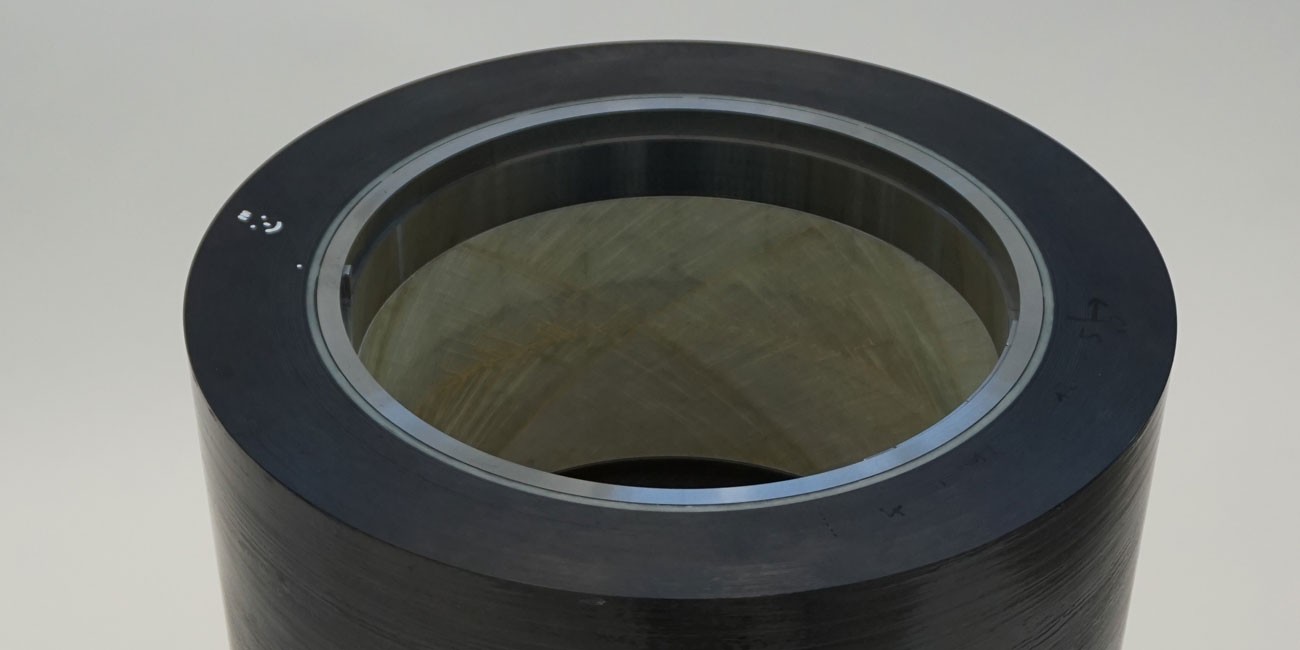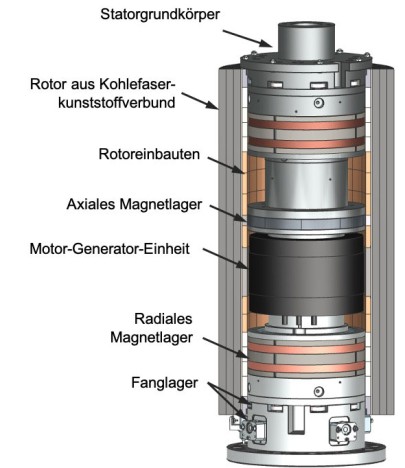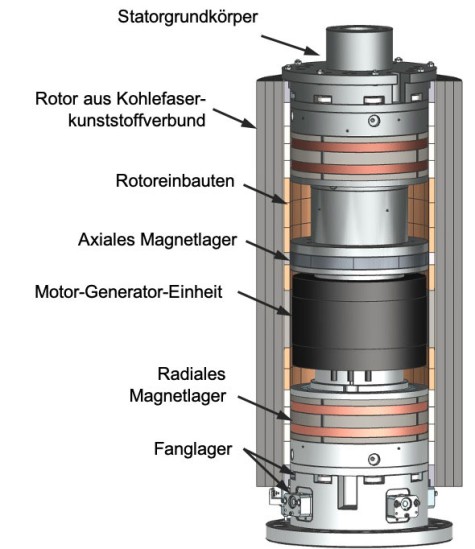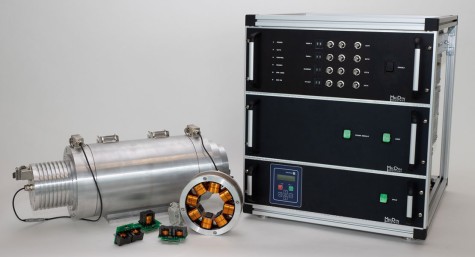In kinetic energy storage systems, electrical energy is converted by an electric motor into kinetic energy of the rotation of a flywheel mass. The system is subject to low calendrical and cyclical aging, which is one of the key advantages of this storage technology.
The energy content of the system is linearly dependent on the inertia of the flywheel mass and quadratically on the rotational frequency. Therefore, the energy content can be efficiently increased via high speeds and flywheels with a high inertia. The use of contact-free magnetic bearings and the operation under vacuum conditions enable high maximum speeds with low losses. At the same time the systems are wear-free. Speed limitations result from the high centrifugal load and the resulting radial enlargement of the rotor. By using flywheels made of fiber-reinforced-plastic composites, it is possible to increase the utilization of the flywheel mass and to store larger amounts of energy in a single system.
The aim of our research is to improve the cost-effectiveness of these systems by further increasing the energy and power density while reducing the energy losses at the same time. Highly integrated concepts, such as the design as an outer rotor, are addressed and tested using full-scale demonstrators. We strive for innovations on both component and system level. That is why, in addition to the system demonstrators, dedicated component test benches for planetary back-up bearing concepts, fatigue strength testing of carbon fiber rotors and active magnetic bearings were developed.









